News
Tesla rolls out latest Safety Score update—Here’s what’s new
Tesla’s latest Safety Score update drops one highly criticized factor, while adding weight to pieces like speeding, follow distance, and more.
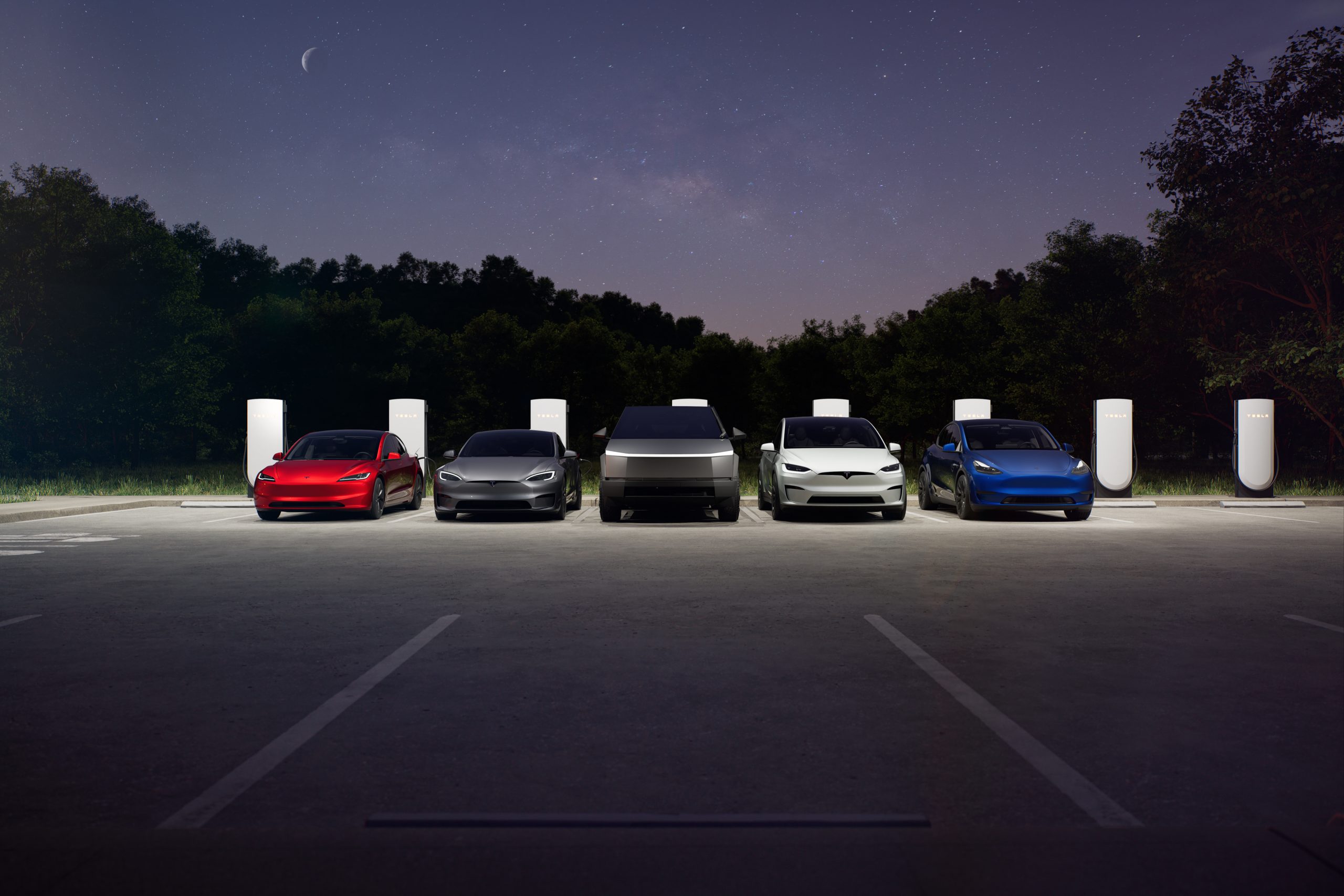
Tesla has officially started rolling out a new version of its insurance program’s Safety Scores beta, improving upon a few different metrics that make up the index.
As detailed on the Tesla Insurance web page, the company has updated its Safety Scores to beta version 2.2 from the previous version 2.1. The update primarily includes improvements to how Excessive Speeding is measured, along with the removal of Forward Collision Warnings (FCW) from the formula.
In addition, Tesla has slightly increased the values of related factors such as Hard Braking and Unsafe Following Time in the v2.2 formula, perhaps in an attempt to help accommodate some of the situations previously covered by the FCW rating.
READ MORE ON TESLA INSURANCE: Tesla launches insurance discount for FSD users in these two states
Tesla’s Safety Scores are used to determine premium rates for buyers of the company’s in-house insurance program, except in California, where privacy laws prohibit the use of real-time driving data to determine premiums. The company also says that its latest formula for Safety Scores were generated using over 22 billion miles of fleet data from its cars, while the company plans to continue improving the formula as more data comes in.
At this time, Tesla Insurance is available in the following 12 states, though Safety Scores aren’t available in California for the aforementioned reason:
- Arizona
- California
- Colorado
- Illinois
- Maryland
- Minnesota
- Nevada
- Ohio
- Oregon
- Texas
- Utah
- Virginia
You can see the factors that make up Tesla’s Insurance Safety Scores below or on its website here, along with the specific formula that makes up a drivers’ 0 to 100 Safety Score.
Hard Braking
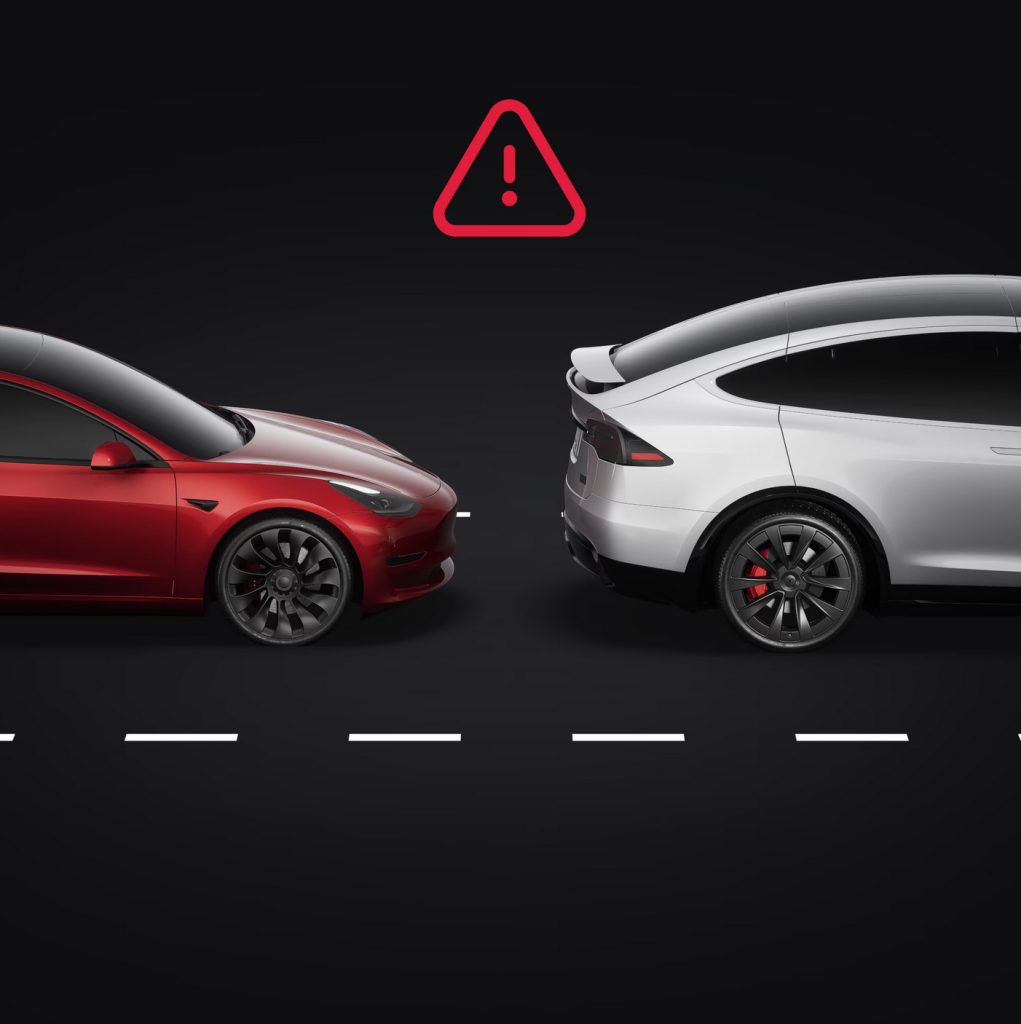
Credit: Tesla
Hard braking is defined as backward acceleration, measured by your Tesla vehicle, in excess of 0.3g. This is the same as a decrease in the vehicle’s speed larger than 6.7 mph, in one second. Hard braking is introduced into the Safety Score Beta formula as the proportion of time where the vehicle experiences backward acceleration greater than 0.3g as a percentage of the proportion of time the vehicle experiences backward acceleration greater than 0.1g (2.2 mph in one second). Hard braking while on Autopilot is not factored into the Safety Score Beta formula. For vehicles with Autopilot computer 3.0 or greater, braking while the vehicle detects yellow traffic lights is also not factored into the Safety Score Beta formula. If the vehicle is unable to detect a yellow traffic light at the time of the hard braking, the event will impact your Safety Score. The percentage shown in the app is the proportion of time spent braking done with excessive force when driving and Autopilot is not engaged. The value is capped at 5.2 percent in the Safety Score Beta formula.
Aggressive Turning
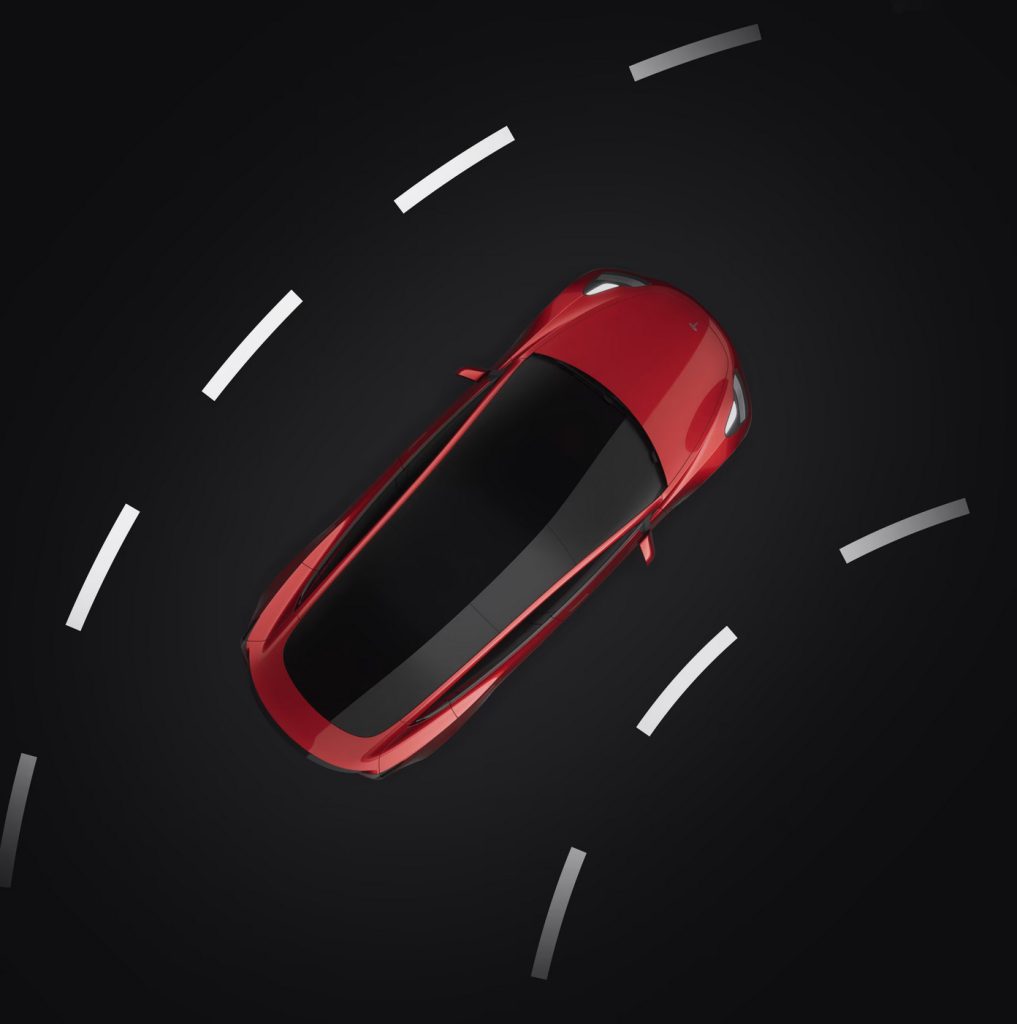
Credit: Tesla
Aggressive turning is defined as left/right acceleration, measured by your Tesla vehicle, in excess of 0.4g. This is the same as an increase in the vehicle’s speed to the left/right larger than 8.9 mph, in one second. Aggressive turning is introduced into the Safety Score Beta formula as the proportion of time the vehicle experiences left or right acceleration greater than 0.4g as a percentage of the proportion of time the vehicle experiences left or right acceleration greater than 0.2g (4.5 mph in one second). Aggressive turning while on Autopilot is not factored into the Safety Score Beta formula. The percentage shown in the Tesla app is the proportion of time spent turning with excessive force when driving and Autopilot is not engaged. The value is capped at 13.2 percent in the Safety Score Beta formula.
Unsafe Following
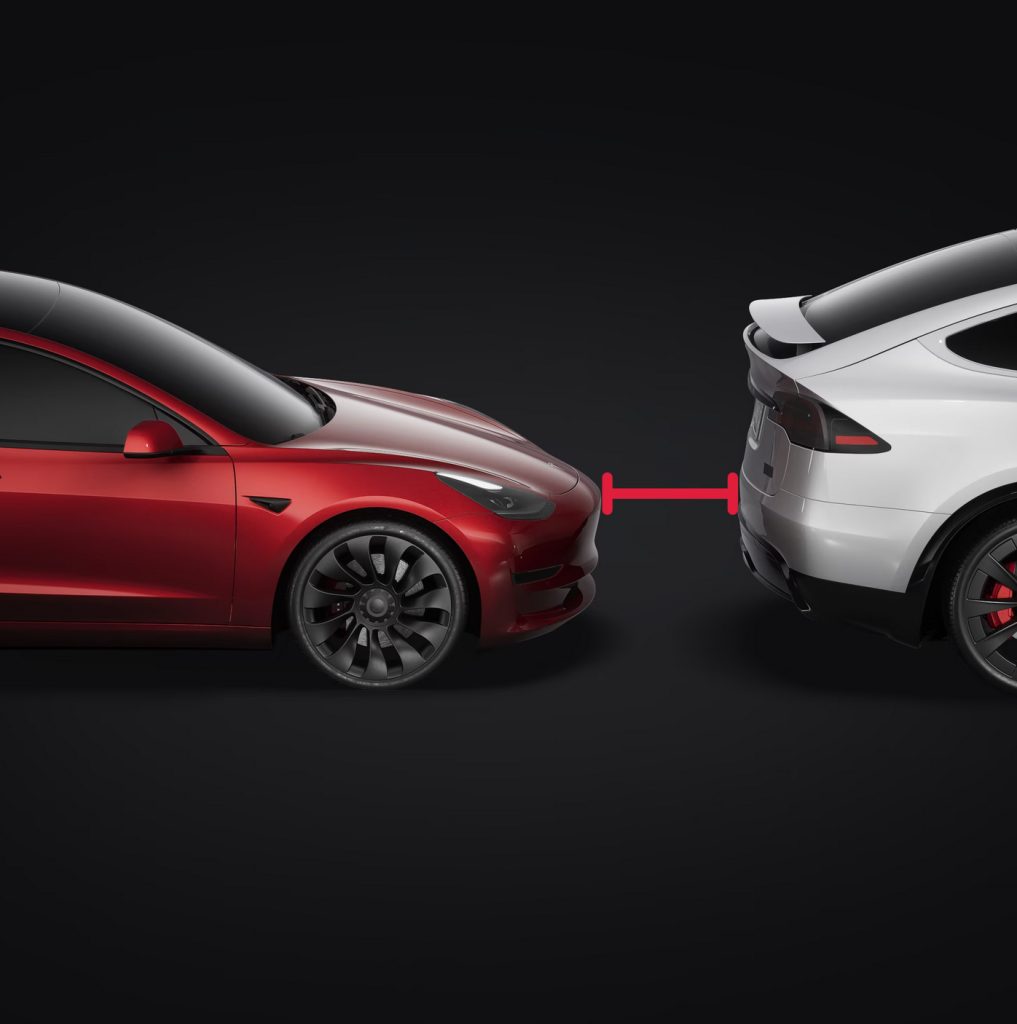
Credit: Tesla
Your Tesla vehicle measures its own speed, the speed of the vehicle in front and the distance between the two vehicles. Based on these measurements, your vehicle calculates the number of seconds you would have to react and stop if the vehicle in front of you came to a sudden stop. This measurement is called “headway.” Unsafe following is the proportion of time where your vehicle’s headway is less than 1.0 seconds relative to the time that your vehicle’s headway is less than 3.0 seconds. Unsafe following is only measured when your vehicle is traveling at least 50 mph and is incorporated into the Safety Score Beta formula as a percentage. Unsafe following while on Autopilot is not factored into the Safety Score Beta formula. The percentage shown in the Tesla app is the percentage of unsafe following when driving and Autopilot is not engaged. The value is capped at 63.2 percent in the Safety Score Beta formula.
Excessive Speeding
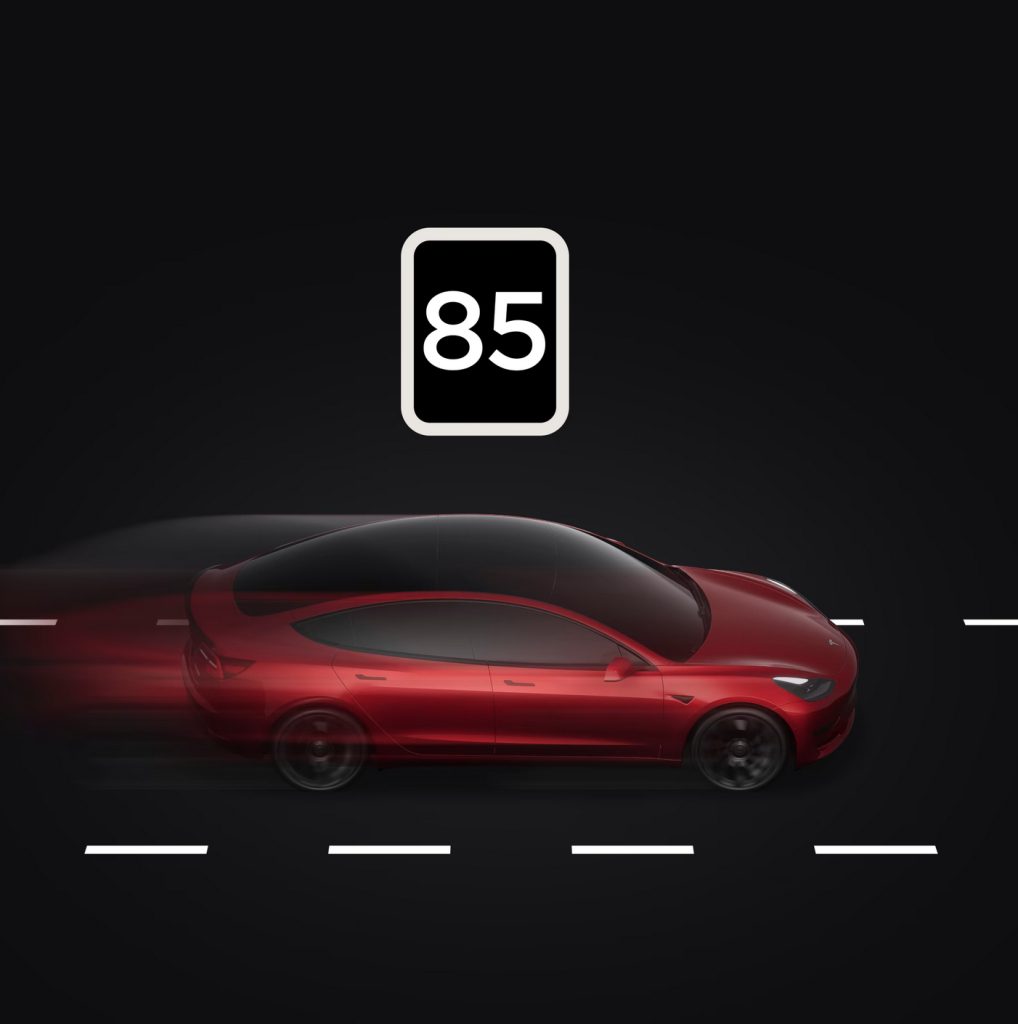
Credit: Tesla
Excessive Speeding is defined as the proportion of time spent driving in excess of 85 mph or driving 20% faster than the vehicle in front of you, when that vehicle is going over 25 mph and is within 100 meters of your vehicle. This value is expressed as a percentage of total driving time and is capped at 10.0% in the Safety Score Beta formula. Speeding while on Autopilot is not factored into the Safety Score Beta formula.
Late-Night Driving

Credit: Tesla
Late-Night Driving is defined as the number of seconds you spend driving at night (11 PM – 4 AM) divided by the number of seconds you spend driving total during the day and night. Due to the variable risk level associated with driving during each late-night hour, each hour is weighed differently, and driving at each hour will affect your Safety Score differently. For example, driving at 11 PM will not affect your Safety Score as heavily as driving at 2 AM. Drive sessions that span two days will apply to the day the trip ends. Late-Night Driving includes all driving at night (11 PM – 4 AM) including any driving done on Autopilot. The value is capped at 14.2 percent in the Safety Score Beta formula.
Forced Autopilot Disengagement

Credit: Tesla
The Autopilot system disengages for the remainder of a trip after the driver has received three audio and visual warnings. These warnings occur when your Tesla vehicle has determined that the driver has not applied sufficient resistance to the steering wheel or has become inattentive. Forced Autopilot Disengagement is introduced into the Safety Score Beta formula as a 1 or 0 indicator. The value is 1 if the Autopilot system is forcibly disengaged during a trip, and 0 otherwise.
Unbuckled Driving
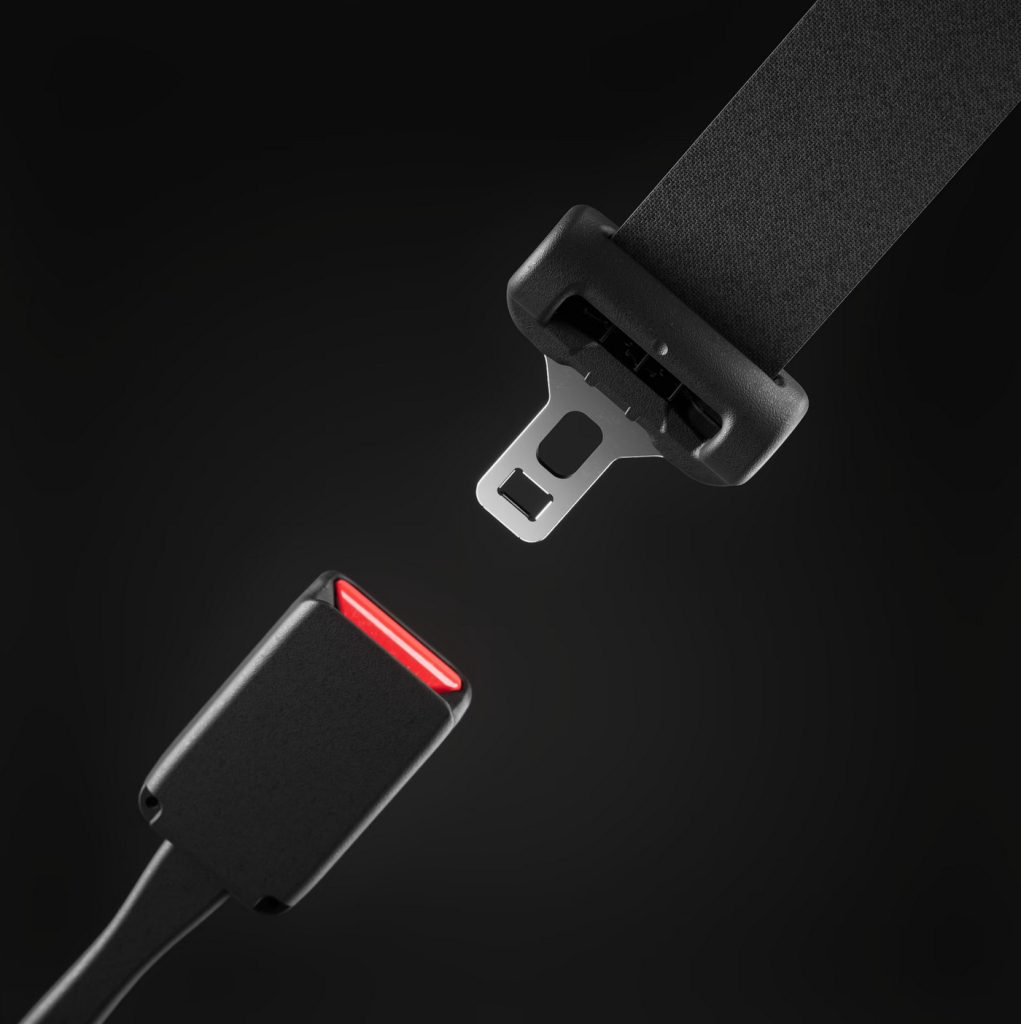
Credit: Tesla
Unbuckled Driving is defined as the proportion of time spent driving above 10 mph without fastening the driver’s seatbelt in a Tesla vehicle, as a percentage of time spent driving above 10 mph. The value shown in the Tesla app is the proportion of time driven at a speed over 10 mph, without buckling the driver’s seatbelt, as a percentage of time spent driving over 10 mph. The value is capped at 31.7 percent in the Safety Score Beta formula.
Tesla’s formula for Safety Score beta v2.2
Tesla takes the formula pictured below, dubbed its Predicted Collision Frequency (PCF), and converts it into the 0 to 100 version 2.2 Safety Score it assigns based on driver behavior. The 2.1 Safety Score formula can also be seen on the Tesla Insurance page, though the below formula is for the newly launched version 2.2.
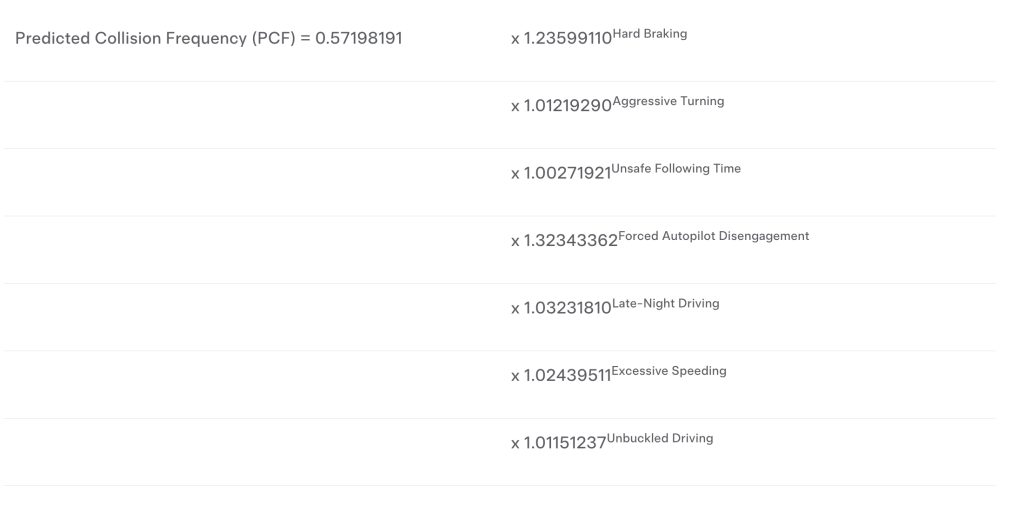
Credit: Tesla
News
Tesla launches in India with Model Y, showing pricing will be biggest challenge
Tesla finally got its Model Y launched in India, but it will surely come at a price for consumers.

Tesla has officially launched in India following years of delays, as it brought its Model Y to the market for the first time on Tuesday.
However, the launch showed that pricing is going to be its biggest challenge. The all-electric Model Y is priced significantly higher than in other major markets in which Tesla operates.
On Tuesday, Tesla’s Model Y went up for sale for 59,89,000 rupees for the Rear-Wheel Drive configuration, while the Long Range Rear-Wheel Drive was priced at 67,89,000.
This equates to $69,686 for the RWD and $78,994 for the Long Range RWD, a substantial markup compared to what these cars sell for in the United States.
🚨 Here’s the difference in price for the Tesla Model Y in the U.S. compared to India.
🚨 59,89,000 is $69,686
🚨 67,89,000 is $78,994 pic.twitter.com/7EUzyWLcED— TESLARATI (@Teslarati) July 15, 2025
Deliveries are currently scheduled for the third quarter, and it will be interesting to see how many units they can sell in the market at this price point.
The price includes tariffs and additional fees that are applied by the Indian government, which has aimed to work with foreign automakers to come to terms on lower duties that increase vehicle cost.
Tesla Model Y seen testing under wraps in India ahead of launch
There is a chance that these duties will be removed, which would create a more stable and affordable pricing model for Tesla in the future. President Trump and Indian Prime Minister Narendra Modi continue to iron out those details.
Maharashtra Chief Minister Devendra Fadnavis said to reporters outside the company’s new outlet in the region (via Reuters):
“In the future, we wish to see R&D and manufacturing done in India, and I am sure at an appropriate stage, Tesla will think about it.”
It appears to be eerily similar to the same “game of chicken” Tesla played with Indian government officials for the past few years. Tesla has always wanted to enter India, but was unable to do so due to these import duties.
India wanted Tesla to commit to building a Gigafactory in the country, but Tesla wanted to test demand first.
It seems this could be that demand test, and the duties are going to have a significant impact on what demand will actually be.
Elon Musk
Tesla ups Robotaxi fare price to another comical figure with service area expansion
Tesla upped its fare price for a Robotaxi ride from $4.20 to, you guessed it, $6.90.

Tesla has upped its fare price for the Robotaxi platform in Austin for the first time since its launch on June 22. The increase came on the same day that Tesla expanded its Service Area for the Robotaxi ride-hailing service, offering rides to a broader portion of the city.
The price is up from $4.20, a figure that many Tesla fans will find amusing, considering CEO Elon Musk has used that number, as well as ’69,’ as a light-hearted attempt at comedy over the past several years.
Musk confirmed yesterday that Tesla would up the price per ride from that $4.20 point to $6.90. Are we really surprised that is what the company decided on, as the expansion of the Service Area also took effect on Monday?
But the price is now a princely $6.90, as foretold in the prophecy 😂
— Elon Musk (@elonmusk) July 14, 2025
The Service Area expansion was also somewhat of a joke too, especially considering the shape of the new region where the driverless service can travel.
I wrote yesterday about how it might be funny, but in reality, it is more of a message to competitors that Tesla can expand in Austin wherever it wants at any time.
Tesla’s Robotaxi expansion wasn’t a joke, it was a warning to competitors
It was only a matter of time before the Robotaxi platform would subject riders to a higher, flat fee for a ride. This is primarily due to two reasons: the size of the access program is increasing, and, more importantly, the service area is expanding in size.
Tesla has already surpassed Waymo in Austin in terms of its service area, which is roughly five square miles larger. Waymo launched driverless rides to the public back in March, while Tesla’s just became available to a small group in June. Tesla has already expanded it, allowing new members to hail a ride from a driverless Model Y nearly every day.
The Robotaxi app is also becoming more robust as Tesla is adding new features with updates. It has already been updated on two occasions, with the most recent improvements being rolled out yesterday.
Tesla updates Robotaxi app with several big changes, including wider service area
News
Tesla Model Y and Model 3 dominate U.S. EV sales despite headwinds
Tesla’s two mainstream vehicles accounted for more than 40% of all EVs sold in the United States in Q2 2025.

Tesla’s Model Y and Model 3 remained the top-selling electric vehicles in the U.S. during Q2 2025, even as the broader EV market dipped 6.3% year-over-year.
The Model Y logged 86,120 units sold, followed by the Model 3 at 48,803. This means that Tesla’s two mainstream vehicles accounted for 43% of all EVs sold in the United States during the second quarter, as per data from Cox Automotive.
Tesla leads amid tax credit uncertainty and a tough first half
Tesla’s performance in Q2 is notable given a series of hurdles earlier in the year. The company temporarily paused Model Y deliveries in Q1 as it transitioned to the production of the new Model Y, and its retail presence was hit by protests and vandalism tied to political backlash against CEO Elon Musk. The fallout carried into Q2, yet Tesla’s two mass-market vehicles still outsold the next eight EVs combined.
Q2 marked just the third-ever YoY decline in quarterly EV sales, totaling 310,839 units. Electric vehicle sales, however, were still up 4.9% from Q1 and reached a record 607,089 units in the first half of 2025. Analysts also expect a surge in Q3 as buyers rush to qualify for federal EV tax credits before they expire on October 1, Cox Automotive noted in a post.
Legacy rivals gain ground, but Tesla holds its commanding lead
General Motors more than doubled its EV volume in the first half of 2025, selling over 78,000 units and boosting its EV market share to 12.9%. Chevrolet became the second-best-selling EV brand, pushing GM past Ford and Hyundai. Tesla, however, still retained a commanding 44.7% electric vehicle market share despite a 12% drop in in Q2 revenue, following a decline of almost 9% in Q1.
Incentives reached record highs in Q2, averaging 14.8% of transaction prices, roughly $8,500 per vehicle. As government support winds down, the used EV market is also gaining momentum, with over 100,000 used EVs sold in Q2.
Q2 2025 Kelley Blue Book EV Sales Report by Simon Alvarez on Scribd
-

 Elon Musk2 weeks ago
Elon Musk2 weeks agoTesla investors will be shocked by Jim Cramer’s latest assessment
-

 News3 days ago
News3 days agoTesla debuts hands-free Grok AI with update 2025.26: What you need to know
-

 Elon Musk1 week ago
Elon Musk1 week agoElon Musk confirms Grok 4 launch on July 9 with livestream event
-

 Elon Musk5 days ago
Elon Musk5 days agoxAI launches Grok 4 with new $300/month SuperGrok Heavy subscription
-

 News2 weeks ago
News2 weeks agoTesla Model 3 ranks as the safest new car in Europe for 2025, per Euro NCAP tests
-

 Elon Musk2 weeks ago
Elon Musk2 weeks agoxAI’s Memphis data center receives air permit despite community criticism
-

 News5 days ago
News5 days agoTesla begins Robotaxi certification push in Arizona: report
-

 Elon Musk2 weeks ago
Elon Musk2 weeks agoTesla scrambles after Musk sidekick exit, CEO takes over sales












